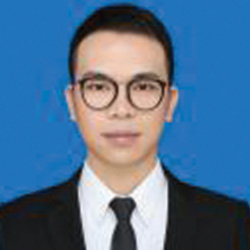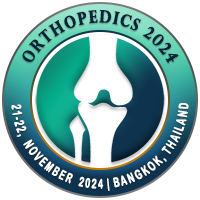
Gang Liu
Chiang Mai University, ChinaTitle: Arthroscopic treatment of two cannulated screws combined with suture anchors for split fractures of the greater humeral tuberosity (Liu-Gang IV): a novel guider technique
Abstract
Objective To compared the clinical effectiveness
between arthroscopic hollow screws combined with a
suture anchor, hollow screws and proximal humerus
internal locking system(PHILOS) in the treatment of
split-type fractures of humeral greater tuberosity.
Methods A retrospective study was conducted to
analyze the 54 patients with split-type fracture of humeral
greater tuberosity who had been admitted to Department
of Joint Surgery, Hospital of Traditional Chinese
Medicine, Affiliated to Southwest Medical University
from May 2015 to August 2020. There were 17 males
and 37 females with an age of (58.4 ± 12.1)
years.According to different treatment methods , they
were divided into 3 groups.Group A of 18 cases was
treated with arthroscopic hollow screws combined with a
suture anchor, group B of 18 cases with hollow screws ,
and group C of 18 cases with PHILOS.The length of
surgical incision, and range of shoulder motion, visual
analogue scale(VAS) , and American Shoulder and
Elbow Surgeons(ASES)score at the last follow-up were
recorded and compared between the 3 groups.
Conclusions In the treatment of split fractures of
humeral greater tuberosity, arthroscopic hollow screws
combined with a suture anchor,hollow screws and
PHILOS can all relieve pain and restore joint function of
the shoulder. However,arthroscopic hollow screws
combined with a suture anchor are the most
recommendable due to their advantages in minimally
invasiveness and reduction in complications.
Biography
Gang Liu, has received his PhD from Chiang Mai
university, Thailand. He has published over 30 papers,
authored a new subtyping of the split humeral tuberosity
fracture. He has worked to integrate basic and clinical
research on 3D printing and clinical instrumentation of
this fracture, and is committed to bringing better medical
technologies to more underprivileged patients in
Southeast and East Asia. He is a member of the reviewers
board of several prestigious journals.

